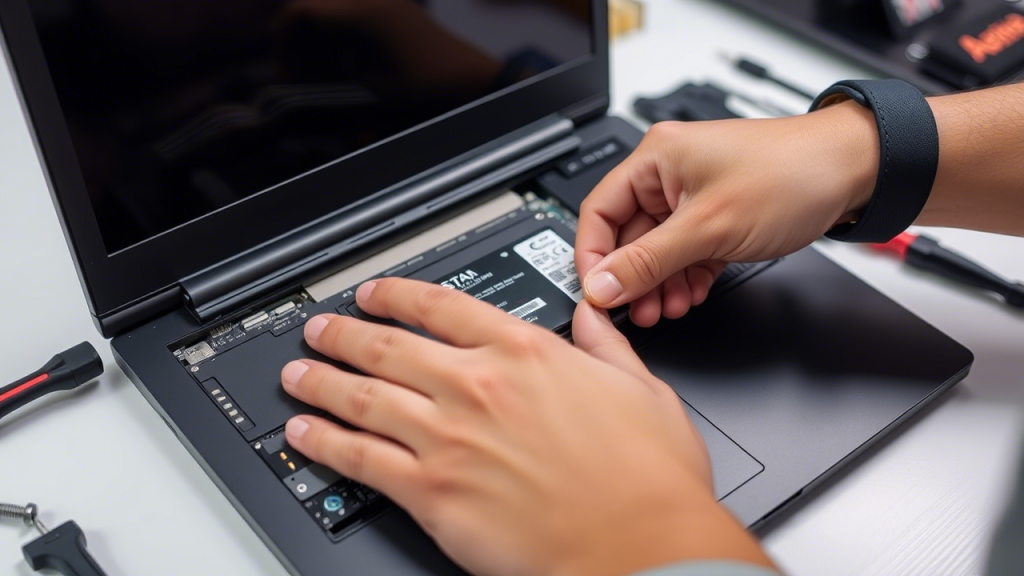🧠 If you thought about speeding up your computer, you have probably heard of SSD. But what to choose: SATA or NVMe? Which type of drive is really faster, and is it worth overpaying for? Let’s figure it out with examples, numbers and simple words.
🧱 What is an SSD and why is it important?
SSD (solid state drive) is a data storage device that is several times faster than classic hard drives (HDD). Main advantages:
- 🚀 Fast Windows and program startup
- 🔁 Lightning-fast file transfer
- 🔇 Quiet operation
- 💪 No moving parts – less chance of breakdown
But among SSDs, there are two main types
- SATA SSD (on the SATA III interface)
- NVMe SSD (on the PCIe interface)
- 🔄 SATA SSD – old, but reliable
SATA SSD is a more affordable and versatile option. It connects via the SATA interface, which has long been the standard.
Speed
- Read: up to 550 MB/s
- Write: up to 500 MB/s
Pros
- ✅ Compatible with almost any PC or laptop
- 💰 Inexpensive
- 🔧 Easy to replace an old HDD
Cons
- 🐢 Limited speed
- ❌ Does not reveal the full potential of SSD technology
- 🗒️ If you have an old computer or need a budget upgrade, SATA SSD is what you need.

⚡ NVMe SSD – next-generation speed
NVMe SSD connects via the PCIe interface, which gives 5-7 times higher speed than SATA.
Speed
- Reading: up to 3500–7000 MB/s
- Writing: up to 3000–6000 MB/s
Pros
- 🚀 Instant launch of systems and programs
- ⚡ Suitable for games, editing, working with large files
- 💻 Miniature (usually in M.2 format)
Cons
- 💸 More expensive than SATA
- 🔥 Can get very hot – sometimes a radiator is needed
- ❗ Support is required on the motherboard
🗒️ If you edit videos, work with 3D graphics, play games or want maximum performance – get NVMe.
| Task | HDD | SATA SSD | NVMe SSD |
|---|
| Booting Windows | 60–120 sec | 10–20 sec | 5–10 sec |
| Copying 10 GB of files | 10–15 min | ~30 sec | ~5–10 sec |
| Loading games | Long | Fast | Very fast |
| Work Photoshop / Premiere | With brakes | Comfort | Fly |
❗ For most everyday tasks, a SATA SSD is more than enough. But if you want “everything at once” — NVMe will give you maximum speed.
🧠 What do you need to know before buying?
Check compatibility.
Your motherboard must have an M.2 slot (or support PCIe via an adapter).
Volume is important.
Minimum — 240/256 GB. Optimal — 500 GB or 1 TB.
Look at the memory type.
There are TLC, QLC, SLC — it’s better to avoid cheap QLC if you need stability.
Controller and cache.
Even NVMe SSDs can be slow without a DRAM cache.
| Name Model | Type | Reading speed | Suitable for… |
|---|
| Kingston A400 | SATA | 500 MB/s | Budget Upgrade |
| Crucial MX500 | SATA | 560 MB/s | Sustainability, stability |
| WD Blue SN570 | NVMe | 3500 MB/s | Average NVMe drive |
| Samsung 980 Pro | NVMe | 7000 MB/s | Enthusiasts, gamers, editors |
💡 When choosing between SATA and NVMe, focus not only on the numbers, but also on your tasks. NVMe speed is impressive, but in real life, for a browser and office, the difference can be minimal.
🔗 Follow echrz.com – here are only useful articles about technology, computers and gadgets without boring terminology.

Leave a Reply